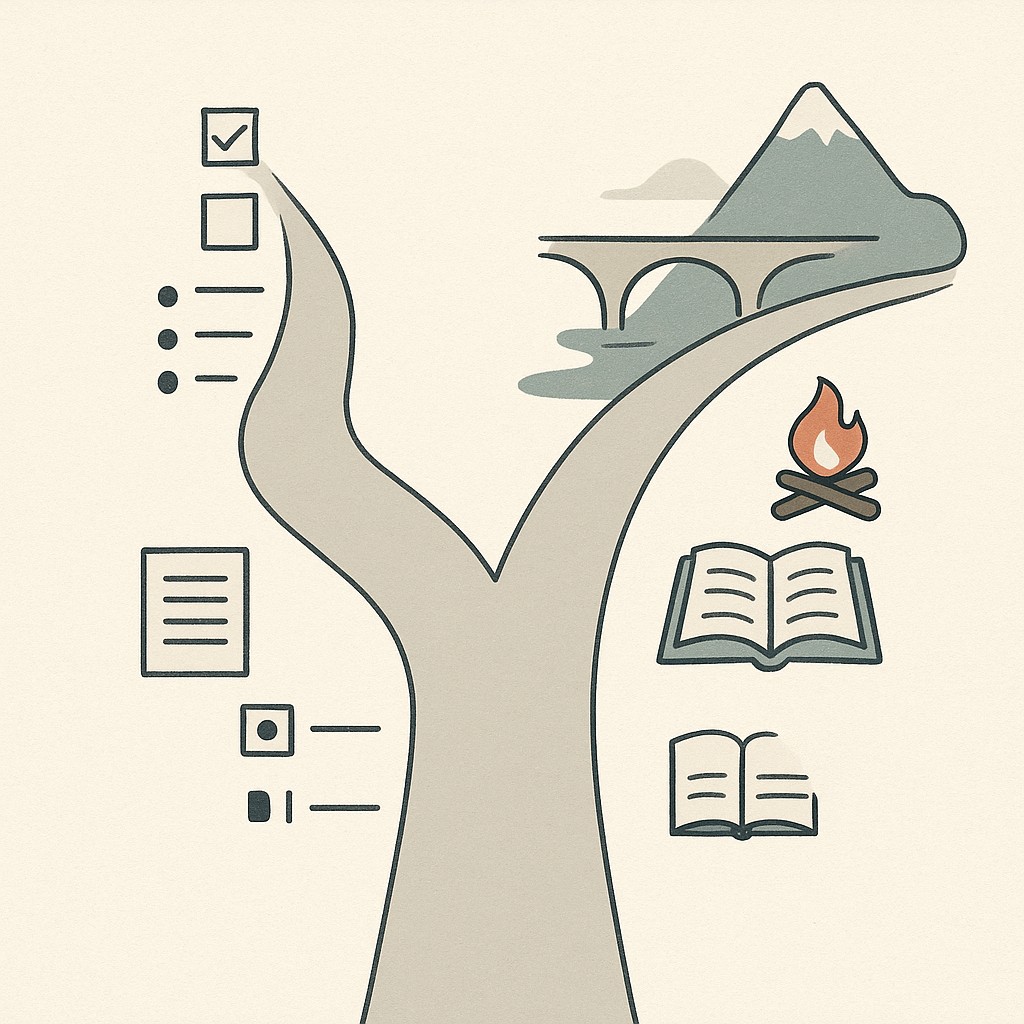Tell Better Technical Interview Stories That Show Judgment and Impact
Tell Better Technical Interview Stories That Show Judgment and Impact

When the Perfect Answer Misses
I walked into that interview ready. This was one of those answers I’d rehearsed over and over, the polished STAR format, all lined up and ready to go. So I gave them the perfect interview response.
But then there was just this pause. A quick polite nod, and we moved on.
It took me a beat to admit it to myself—my answer was fine but forgettable, proof that you have to tell better technical interview stories if you want people to care. I had covered everything on the rubric, but it didn’t land. I’d answered the question. I just hadn’t made them care. If you’re reading this, you might worry that story is just fluff, or that opening up about mistakes will look bad. I’ve felt that, too. But here’s what I learned: structure gets the facts out, story gets the signal in.
My response had all the pieces: scope, action, result. I ticked each box, just like every guidance doc tells you to do. But the answer didn’t go past the surface—it was technically correct, but had no tension, no stakes, no moment where my thinking showed up.
STAR is great for organizing an answer. It gives clarity, sequence, order. But if you want an interview to actually engage, you need narrative and stakes. Structure is table stakes. Persuasion comes from story.
The Gap: Structure vs. Story
I used to think that delivering a tight, organized answer was the whole game—basically STAR vs storytelling wasn’t even a question in my mind. You tick the boxes. You control the chaos. You get credit for neatness. But that’s not what makes an interviewer sit up or remember you. I was overvaluing neatness, undervaluing tension. If you’re here, wondering if there’s actually a difference—there is.

STAR does its job, but storytelling in technical interviews changes what people remember. It lines up facts, checks off what happened. Narrative does something else entirely. Where STAR frames the steps, story frames the stakes and consequences. Here’s the strange part I didn’t expect, and you might not either—when you swap stats for stories, you’re betting on recall—story impact faded by only a third in a day, while facts dropped a dramatic 73%. That shift took me from “I did X” to “here’s why X even mattered,” and it changed how people responded. The leap for me was seeing interviews as mini-arguments. You’re not just showing what you did, you’re convincing someone your judgment could help their team.
A list of tasks won’t grab attention—conflict will. Audience engagement actually rises when the story follows a dramatic arc, peaking at the moment of highest tension dramatic arc engagement. The moment something could go wrong, or you’re forced to choose, that’s when interviewers lean in. You’re not just reciting events; you’re showing how you think when there’s uncertainty on the line.
Maybe you’re worried this is performative, too much drama, or missing the point—I get it. I worried too—about drama, about oversharing—but the point is to reveal judgment, not theatrics. If you frame the stakes and show real decisions, you’re teaching someone how you actually operate, flaws and all. That’s what sticks.
How to Tell Better Technical Interview Stories That Actually Land
Start with what’s at stake. When I’m asked about building an automation framework, I don’t launch into code patterns or roll-up stats. I set the stage: “This was the quarter where broken test runs were blocking releases—users were losing trust, teams were missing deadlines, and our competitors were shipping like clockwork.” The pressure matters. It’s the difference between “I built a tool” and “the team’s success was riding on my next move.” When you open with what’s on the line—be it user pain, team velocity, or a ticking clock—people pay attention.
Then narrate how you show thinking in interviews by walking through the problem, including the tough calls and errors. Interviews themselves can only explain up to 10% of later job performance, which means your answers need to show real judgment hiring interviews impact.
So I show my path: I debated whether to patch the brittle legacy scripts or start fresh, knowing a rewrite might cost us the whole sprint. My bias was towards quick fixes, but I’d seen those backfire. I admit I underestimated the migration complexity, thinking plug-and-play would work. It didn’t. And when the new framework started throwing edge case errors, I had to rethink my approach, balance short-term pain against long-term stability, and loop in skeptical teammates. Your interviewer wants to see not just what you did, but how you think when outcomes are uncertain.
Don’t skip your missteps. The moment I admit a misread—the botched rollout, the build failures—and explain how I corrected it, engagement jumps. They’re not grading you for perfection; they’re checking if you learn and react.
There was one day late last year when I was rushing, trying to get a release out before leaving for vacation. I thought I’d squeezed in a quick fix between meetings—just a config tweak, nothing big. Came back forty minutes later to a Slack channel exploding with error logs and three teammates trying to work around my hasty patch. I still cringe thinking about how long it took me to own up. The lesson kept circling back: quick fixes are tempting, but rarely as simple as you hope. Funny enough, I find that same logic creeping into weekend projects—home repairs, “just tightening that screw.” There’s always a moment when the shortcut bites. The tieback to engineering is real.
Finally, close with the impact in plain terms. If you can point to user outcomes, performance gains, or revenue lift, you’ve earned attention. “By the end, our deploys tripled—blocked releases dropped to zero, users stopped reporting breakages, and the team got a full sprint back.” That’s not just a task completed; that’s a measurable win. Structure gives your answer bones, but story brings out the signal—what you actually did, why it mattered, and how you changed the outcome.
From Task-First Recaps to True Engineering Stories
Our automation framework used to be the Achilles heel of every release. The test suite routinely chewed up eight hours per run, so by the time a build cleared, half the team was already home. That overhead wasn’t just annoying—it meant every release dragged out, and once a week, we’d slip the deadline.
You could feel the frustration stacking up: developers losing steam, PMs asking for workarounds, conversations that got shorter and sharper. I remember marking calendar after calendar, hoping this was the week nobody would grumble in standup. If you’ve ever ridden that cycle, you know it—it’s not just a problem, it becomes a mood in the room. I kept telling myself, “We’re just being careful,” but eventually you start asking, careful for who? Careful for what?
What changed—for me and the interviewer—was admitting the cost up front, because that’s how you make technical interviewers care. The conversation wasn’t just “here’s what I built,” but “here’s why we were so desperate to fix it.” You’ll notice it: the moment I named the stakes—lost hours, unhappy teammates, risk stacking up—their posture shifted. Suddenly, it was genuine curiosity. “How did you handle rollout risk? What tradeoffs did you have to make? If you had to ship early, what would you cut?” When what’s at stake is clear, questions get sharper, and so does the connection.
Here’s another: our API started buckling under load, and the symptoms were ugly—slow queries, unhappy users refreshing the page, and a database that gave me heartburn. I faced a textbook fork: refactor the database and rearchitect for performance, clean but risky, or slap a caching layer on top for a quick fix. One path was beautiful on paper—elegant normalization, pristine indexes—but I had no margin for big risks mid-quarter. The other would ease the pain, but felt like a patch, not a true solution.
I admit: instinct pushed me towards “just cache it”—I’d read enough postmortems to be wary, but tradeoffs are real when the customer is already suffering. What tipped the decision was re-framing impact, not just technical elegance. I chose caching, but made sure we instrumented everything—tracking query times, watching for data staleness, setting up “roll-back” hooks in case things went sideways. Later, I ran a post-mortem and, yeah, we uncovered some edge cases I hadn’t thought through. Still, being honest about the compromise (and the risks we’d tolerate) ended up mattering more than sticking to textbook purity.
Today, those queries are five times faster. The user complaints dried up. Customers stopped playing whack-a-mole with the refresh button, and the support tickets dropped off the radar. That’s an outcome you can point to, not just a technical victory but a real difference for both users and the business.
So here’s what sticks when you tell better technical interview stories. Story reveals judgment, structure keeps everybody clear. I still use STAR—it’s the backbone, the form. But I only start ticking those boxes after I’ve earned attention by naming what was at risk and showing my thought process. When you build your answer around stakes, decision-making, and impact—the moments that could’ve gone either way—interviewers lean in, remember you, and get signal on how you’d operate on their team. Facts organize, stories persuade. That’s how you stop being just one more technical candidate and become the one who stands out.
Making Narrative Answers Part of Your Daily Practice
Let’s tackle the worry head on: you don’t need to craft narrative interview answers as an epic every time you prep for an interview or reflect on a project. I promise, this is lighter than it sounds. Since this is post 6 of 11, consider this your cue to start small—twenty seconds after a standup, jot two lines: what was at stake, what you actually thought, one line on the outcome.
Try this tomorrow. Give yourself one minute to tell a micro-story. Hit three beats—what was at stake, a real decision you made (even a slip), and one metric or user/teammate response. That’s it. Just once a day.
Turn your notes on stakes, decisions, and impact into clear, shareable drafts in minutes—use our AI to generate concise content that matches your voice and saves you time.
If you’re leading teams, you can model this every time you close a loop or wrap a design review. In calibration sessions, pick one messy decision and show what pushed you past the safe route. The more senior you are, the more your stories signal judgment and teach others how to decide. Your team isn’t just absorbing best practices—they’re watching how you weigh risk, how you own mistakes, and how you highlight real impact (not just process).
So you’ve got a choice on your next interview. Stack up your completed tasks, or lead with the conflict and show your thinking at the hard edge. A list of tasks won’t grab attention—conflict will.
Most days, I still struggle to decide when to push a risky solution or reach for the safe fix. There’s probably no formula here. You just get better at naming the stakes and owning your decision. That’s something I’m still working on.
Enjoyed this post? For more insights on engineering leadership, mindful productivity, and navigating the modern workday, follow me on LinkedIn to stay inspired and join the conversation.
You can also view and comment on the original post here .
